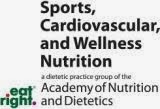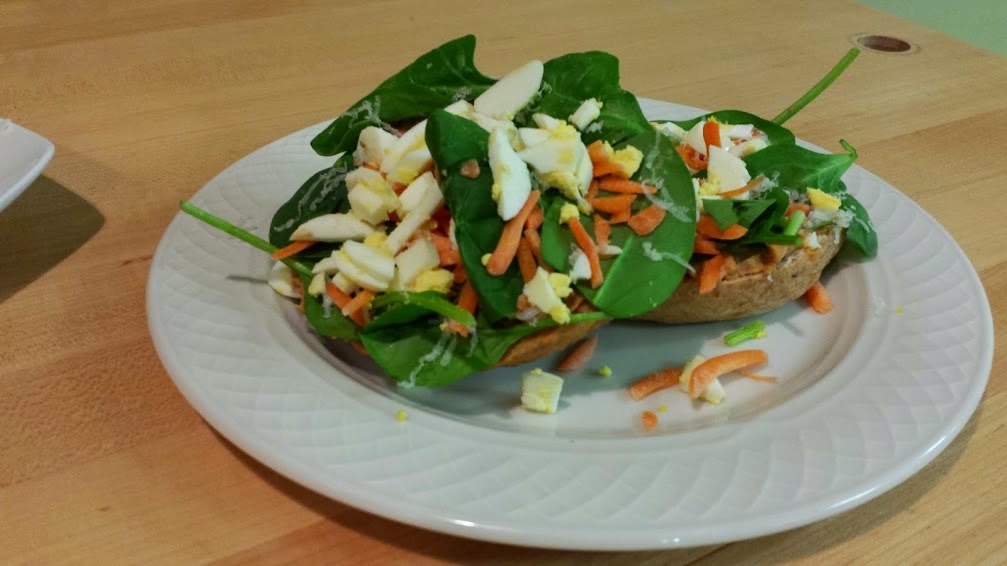It
is a well-known fact among dietitians that the general public fails to meet
nutrition recommendations. Athletes, whose endurance and performance are critically
affected by nutritional status and food intake, are no exception. Surprisingly, studies have consistently shown
that athletes, male and female, adolescent to collegiate to elite level, and
across various athletic activities, all consistently under-consume carbohydrate
foods and consume more than necessary levels of protein and fat. Additionally,
intake of calcium, iron, B-vitamins, vitamin D and Vitamin A fall short of
recommendations. 1, 2, 3
Most
athletes seek to perform at their greatest level, yet after successive daily
training sessions, this inadequacy and imbalance can lead to significant
decreases in energy levels and athletic performance. Studies have shown that most athletes have inadequate
nutrition knowledge, another contributing factor; specifically, athletes are
unaware of specific carbohydrate needs, carbohydrate use in the body, vitamin
storage, protein (and its relation to muscle gain vs. energy), and low-fat and
weight loss diets. 4 Fortunately, for the athlete who wants to
perform at his/her best, intervention studies have shown that with proper knowledge
and guidance, athletes increase nutrition knowledge and self-efficacy and thus
make positive dietary changes which can increase or improve performance. 5,
6
It’s
not enough to give an athlete a daily carbohydrate, protein, calorie and fat number
to reach, based on the recommendations in the Nutrition and Athletic Performance Position Paper from the Academy of Nutrition and
Dietetics, the American College of Sports Medicine and the Dietitians of Canada
7.
It is difficult for an
athlete to translate those numbers into real food choices within a daily food
plan. What does 1.2 to 1.7 g/kg protein,
6 to 10 g/kg carbohydrate and 20-35% fat (intake from total calories) really look like?
Below
is a visual representation and breakdown of what one day’s worth of food looks
like for a 140-pound, very active, 20-year-old female athlete, based on the
aforementioned recommendations (2,880 calories, 384-640g carbohydrate, 77-109g
protein, 42-49g fat). It’s a lot of food
and it’s a lot of carbohydrate.
Remember, most athletes consume enough protein (optimizing protein
intake by spreading it throughout the day, however, is more of a challenge but
that’s another blog post) but most athletes under-consume carbohydrates. Coincidentally, in writing this meal plan, it
was most challenging to reach target carbohydrate levels—reaching protein was
easy. Looking at it this way, it is easy
to see why many athletes themselves are finding it difficult to meet carbohydrate
needs, especially in today’s carbo-phobic society, when even as a nutrition
professional, I find that most challenging, too.
Many
foods chosen in this meal plan were selected because they provide high doses of
nutrients that are typically lacking in an athlete’s diet—calcium, iron,
Vitamins A and D, B-vitamins and antioxidants.
Please keep in mind that a larger athlete, such as a 200-pound active
male, will have much higher needs (closer to 5,000 calories, 540-900g
carbohydrate, 108-153g protein and 111–167g fat).
Breakfast
Giant Yogurt & Cereal Bowl -- 2/3 cup 2% plain Greek
yogurt, topped with 2/3 cup Bob’s Red Mill All-Natural granola, 1 tablespoon
ground flax seed, 1 tablespoon slivered almonds, 2 chopped dates, 1 sliced
banana and ¼ cup light vanilla soymilk (638
calories, 115g carb., 10g fat, 2g sat. fat, 27g protein)
Mid-Morning Bagel Snack
1 Pepperidge
Farm Whole Wheat bagel spread with 2 tablespoons hummus and topped with ½ cup
baby spinach, ¼ cup shredded carrots, 1 hard-boiled egg (chopped) and 2
tablespoons crumbled feta cheese (459
calories, 60g carb., 15g fat, 5g sat. fat, 23g protein)
NOTE:
If an athlete has an afternoon workout, he/she may consume half the bagel snack
mid-morning and the other half in the afternoon (prior to the workout), paired
with 8 ounces 100% fruit juice.
Lunch:
Salmon Sandwich - 2 slices Pepperidge Farm Ancient Grains bread, 1
slice Sargento Natural baby Swiss cheese, 2 ounces Chicken of the Sea pink
salmon, ½ tomato (sliced), ¼ cup shredded cabbage mixed with ¼ cup coleslaw
Pasta Salad - 1/2 cup prepared pasta salad tossed with 1 cup
steamed broccoli, ¼ cup cherry tomatoes, ¼ cup steamed snow peas and 2
tablespoons shredded carrots
Homemade Trail Mix - 1 ounce Newman’s Own Spelt Pretzels mixed with ¼ cup
dried cherries
paired with 1 medium orange and 1 cup baby carrots
(830 calories, 150g carb., 13g fat,
4g sat. fat, 37g protein)
Post-workout:
Cherry-Banana
Smoothie -
1 cup frozen unsweetened cherries, 1-½ cups 1% milk, 1 medium banana, ½ scoop
vanilla whey protein powder and 1 tablespoon honey
(390 calories,
75g carb., 1g fat, 0g sat. fat, 23g protein)
Dinner
Smothered
Chicken - 3
ounces roasted chicken breast topped with 1 cup sliced fresh mushrooms and ¼
cup chopped onion (sautéed with 1 teaspoon olive or canola oil)
Paired
with 1 ½ cups steamed broccoli and cauliflower (topped with 1 tablespoon
Parmesan cheese), 1 medium baked sweet potato (topped with 1 teaspoon chopped
pecans and a dash of cinnamon)
Strawberry
Parfait: 1
cup sliced strawberries with ¼ cup low-fat vanilla yogurt and 1 Lindt Dark
Chocolate Square
(550
calories, 77g carb., 14g fat, 4g sat. fat, 32g protein)
A Day's Worth of Food
Note
the smoothie in the picture, intended to be a post-workout snack, eaten before
dinner:
Total Day’s
Nutrition: 2,867 calories, 477g carbohydrate, 53g fat, 15g sat. fat, 142g
protein
1.
García-Rovés, Pablo M., et. al. “Nutrient Intake and Food Habits of
Soccer Players: Analyzing the Correlates of Eating Practice.” Nutrients. 6.7 18 Jul 18 2014:
2697-717. PubMed.gov. Web. 15 Jan. 2015.
2. Nogueira JA, Da Costa TH. “Nutritional Status of
Endurance Athletes: What is the Available Information?” Archoivos Latinoamericanos de Nutricion. 98.4 (1998): 419-425.
PubMed.gov. Web. 15 Jan. 2015
3.
Beals, Katherine A., Manore Melinda M., “Nutritional Status of Female Athletes
with Subclinical Eating Disorders.”
Journal
of the Academy of Nutrition and Dietetics. 98.4 (1998): 419-425
4. Yelverton, Jherrica. “Differences in Collegiate Athlete
Nutrition Knowledge as Determined by Athlete Characteristics.” The Sport Journal. 14 Oct. 2014. Web. 20
Jan. 2015. <http://thesportjournal.org>
5. Torres-McGehee, Jour Toni M., et. al. “Sports Nutrition
Knowledge Among Collegiate Athletes, Coaches, Athletic Trainers, and Strength
and Conditioning Specialists.”
Journal of
Athletic Training. 47:2. (2012): 205-11. PubMed.gov. Web. 20
Jan. 2015.
6. Abood, Doris A.,
“Nutrition Education Intervention for College Female Athletes.” Journal of Nutrition Education and Behavior.
36.3 (2004): 135-139.
7. Academy of Nutrition and Dietetics, “Position of the
American Dietetic Association, Dietitians of Canada, and the American College
of Sports Medicine: Nutrition and Athletic Performance.” Journal of the American Dietetic Association. 109.3 (2009): 509-527 Eatright.org Web. 27
Jan. 2015.
About the Author
Kym earned her Bachelor of Science degree in nutrition and dietetics and minored in food science at Dominican University, River Forest, Illinois. She completed the clinical component of her dietetic internship with Iowa State University at Great River Medical Center in Burlington, Iowa. Her previous experience working as a nutrition educator at Scott County WIC provided her with additional focused training in several areas including pregnancy, postpartum wellness, breastfeeding and infant and child nutrition. In June of 2009, Kym completed the CDR Certificate of Training in Adult Weight Management. Kym is a member of the Academy of Nutrition and Dietetics (formerly the American Dietetic Association) and the Iowa Dietetic Association. Additionally, she is also a member of several dietetic practice groups, including the Dietitians in Business and Communications, Food and Culinary Professionals dietetic practice group and the Sports, Cardiovascular and Wellness Nutrition dietetic practice group. She has a particular interest in culinary nutrition and enjoys cooking, baking, recipe modification, and learning about food and wine. She played varsity volleyball at Dominican University and continues to enjoy an active lifestyle jogging, biking and weight training.
Follow Kym Wroble, RD, LD, on Pinterest.
http://pinterest.com/wrobkymb/







